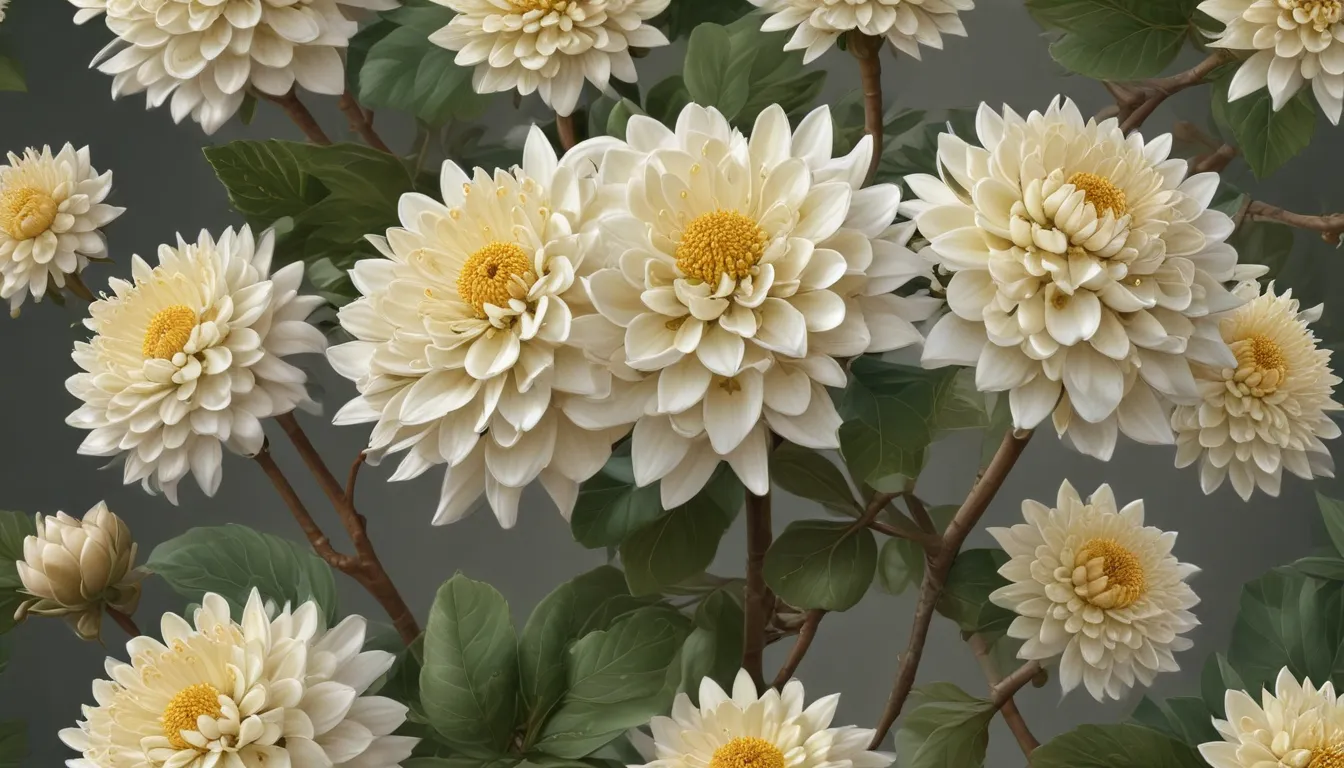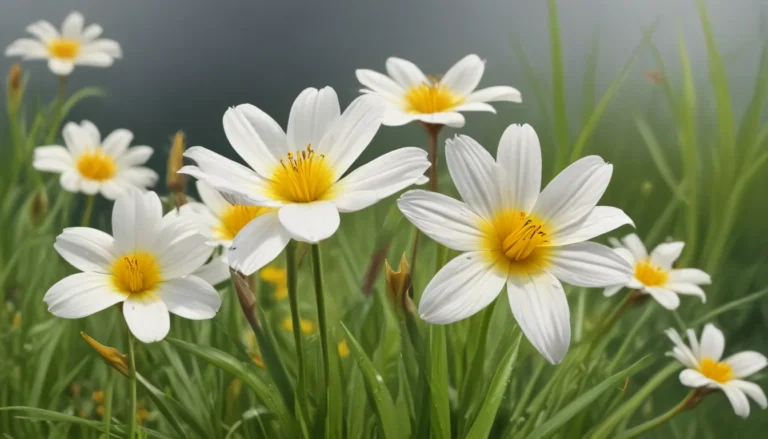The pictures we use in our articles might not show exactly what the words say. We choose these pictures to make you interested in reading more. The pictures work together with the words but don’t take their place. The words still tell you the important facts.
Are you a plant enthusiast seeking to expand your knowledge and discover new botanical wonders? Look no further than Edgeworthia chrysantha, also known as the Paperbush plant. This captivating and versatile flowering shrub hails from the woodlands of China and has been gaining popularity among gardeners and nature enthusiasts for its stunning clusters of fragrant yellow flowers that bloom during the late winter and early spring months. Beyond its aesthetic appeal, this plant boasts a rich history and a plethora of interesting facts that make it a truly fascinating species to learn about.
Unveiling the Mysteries of Edgeworthia Chrysantha
Let's delve into 19 intriguing facts about Edgeworthia chrysantha, shedding light on its unique characteristics, cultivation, and fascinating qualities that set it apart in the world of plants and gardening.
The Enchanting Paperbush: A Plant of Many Names
- Edgeworthia chrysantha is commonly known as the Paperbush or the Oriental Paperbush, reflecting its unique paper-making potential.
- This deciduous shrub belongs to the Thymelaeaceae family, which includes around 50 species of flowering plants, and stands out for its captivating fragrance and appearance.
A Burst of Winter Beauty: Blooms and Fragrance
- The Paperbush blooms in late winter or early spring when most plants are dormant, providing a burst of color and fragrance to the garden.
- Its vibrant yellow flowers, arranged in small clusters, emit a highly aromatic scent that attracts bees and other pollinators, contributing to local ecosystems.
From Bark to Paper: A Plant of Utility and Beauty
- The bark of Edgeworthia chrysantha is used to make high-quality handmade paper in several Asian countries, showcasing its versatility and cultural significance.
- Its elegant, vase-shaped habit, striking flowers, and leathery leaves make it a popular choice for adding visual interest and fragrance to gardens and landscapes.
Medicinal Marvel: Healing Properties and Cultural Significance
- The Paperbush is renowned for its medicinal properties and has been used in traditional Chinese medicine for centuries.
- Its bark and roots are believed to possess anti-inflammatory, analgesic, and antioxidant properties, highlighting its importance beyond its ornamental value.
Symbols of Strength: Meaning and Resilience
- In its native habitat, Edgeworthia chrysantha is considered a symbol of winter, representing strength and resilience during the cold season.
- Its early bloom serves as a reminder of the approaching spring, adding a touch of hope and vitality to the winter landscape.
Gardening Delights: Beauty and Benefits for All
- Edgeworthia chrysantha's ornamental value, deer resistance, and ability to create a serene atmosphere make it a must-have in any garden.
- Its compact size, long lifespan, and adaptability to various climatic conditions make it a versatile and low-maintenance addition to outdoor spaces.
Embracing the Beauty of Nature: A Sensory Experience
As you explore the captivating world of Edgeworthia chrysantha, you'll be enchanted by its visually stunning blooms, delightful fragrance, and cultural significance. Whether you are a gardening enthusiast seeking to enhance your outdoor space or simply a nature lover eager to learn more about the wonders of the natural world, the Paperbush plant offers a wealth of beauty and benefits to enjoy.
Cultivating Edgeworthia Chrysantha: Tips and Tricks
If you're considering adding Edgeworthia chrysantha to your garden, here are some essential tips to help you care for this remarkable plant:
- Ideal Growing Conditions: Edgeworthia chrysantha thrives in well-draining soil, partial shade to full sun exposure, and mild temperatures. Adequate moisture and protection from harsh winds are also key to its optimal growth.
- Watering: Keep the soil consistently moist but not waterlogged, especially during dry periods. Monitor the moisture level and adjust watering to prevent overwatering and root rot.
- Container Cultivation: Yes, Edgeworthia chrysantha can be grown in containers with proper drainage and regular watering and fertilization.
- Pruning: While pruning is not necessary, light pruning after flowering can shape the plant and remove any damaged branches for a healthier appearance.
- Cold Climate Care: Edgeworthia chrysantha can tolerate some frost with protection, making it suitable for temperate climates or regions with mild winters.
- Pest and Disease Management: Watch out for aphids and fungal diseases like powdery mildew, but overall, the Paperbush is resistant to common pests and diseases with proper care.
Unleashing Your Garden’s Potential: The Beauty of Edgeworthia Chrysantha
In conclusion, Edgeworthia chrysantha, with its unique characteristics, rich history, and cultural significance, is a remarkable plant worth admiring and preserving. Whether you're drawn to its vibrant flowers, fragrant scent, paper-making potential, or medicinal properties, the Paperbush promises to enchant and inspire with its endless wonders.
If you're seeking a plant that not only enhances your garden's beauty but also contributes to local ecosystems and cultural heritage, consider adding Edgeworthia chrysantha to your outdoor space. Its allure and significance will surely make it a cherished addition that brings joy and fascination to your botanical adventures.
Unveil the Magic of Nature: Explore More Botanical Wonders
As you immerse yourself in the world of plants and nature, consider delving into the allure of Plumeria and Yellow Loosestrife, two captivating species that add color and charm to any landscape. By exploring these botanical wonders, you'll uncover the secrets of nature's most stunning creations and deepen your appreciation for the beauty that surrounds us.
Our commitment to delivering trustworthy and engaging content is at the heart of what we do. Each fact on our site is contributed by real users like you, bringing a wealth of diverse insights and information. Trust in our dedication to quality and authenticity as you embark on your journey to learn and explore the wonders of the natural world.
FAQs About Edgeworthia Chrysantha
Q: What are the ideal growing conditions for Edgeworthia chrysantha?
A: Edgeworthia chrysantha thrives in well-draining soil, partial shade to full sun exposure, and mild temperatures, with adequate moisture and protection from harsh winds.
Q: How often should I water my Edgeworthia chrysantha plant?
A: Keep the soil consistently moist but not waterlogged, especially during dry periods, to prevent overwatering and root rot.
Q: Can Edgeworthia chrysantha be grown in containers?
A: Yes, with proper drainage, regular watering, and fertilization, Edgeworthia chrysantha can be successfully grown in containers.
Q: Does Edgeworthia chrysantha require pruning?
A: While not necessary, light pruning after flowering can shape the plant and remove any damaged branches for a healthier appearance.
Q: Can Edgeworthia chrysantha be grown in colder climates?
A: Edgeworthia chrysantha can tolerate some frost with protection, making it suitable for temperate climates or regions with mild winters.
Q: Are there any pests or diseases that commonly affect Edgeworthia chrysantha?
A: Watch out for aphids and fungal diseases like powdery mildew, but overall, the Paperbush is resistant to common pests and diseases with proper care.
Embark on your journey to discover the fascinating world of Edgeworthia chrysantha and unlock its endless wonders. Whether you're a seasoned gardener or a curious nature enthusiast, this captivating plant promises to enchant and inspire with its beauty, fragrance, and cultural significance. Immerse yourself in the magic of nature and embrace the joy of exploring botanical marvels that bring vibrancy and vitality to your outdoor space.






